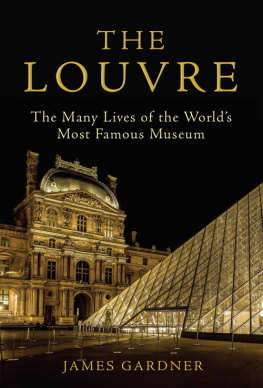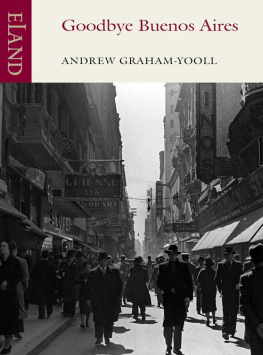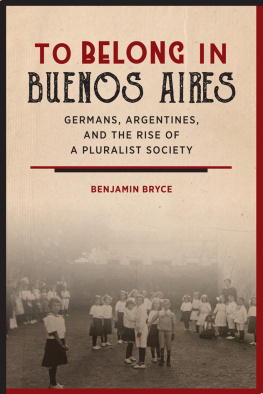Buenos Aires
The Biography of a City


James Gardner

St. Martins Press
New York
Thank you for buying this St. Martins Press ebook.
To receive special offers, bonus content, and info on new releases and other great reads, sign up for our newsletters.

Or visit us online at us.macmillan.com/newslettersignup
For email updates on the author, click here.
The author and publisher have provided this e-book to you for your personal use only. You may not make this e-book publicly available in any way. Copyright infringement is against the law. If you believe the copy of this e-book you are reading infringes on the authors copyright, please notify the publisher at: us.macmillanusa.com/piracy .
In Memoriam
Joachim Neugroschel
(19382011)
a fellow of infinite jest
When I arrived in Buenos Aires for the first time, on February 1, 1999, I went looking for a history of the city that would explain the genesis and evolution of its urban landscape. Having read excellent histories of Paris, London, Rome and New York, I assumed that Buenos Aires, being one of the worlds great urban centers, must surely have a wealth of comparable books. But that was not the case. Although I found many excellent volumes on the most obscure aspects of the city, I found nothing that explained the grand strategy of its development. In the more than sixteen years that have elapsed since then, I did manage to find secondhand bookshops with a few out-of-print volumes that served my purposes well enough, and in more recent years some good books have appeared, but they are more devoted to the history of the people of Buenos Airesthe Porteos, as they are calledor to a detailed and scholarly examination of its urban planning than to a readable account of its evolution. And all of them were in Spanish.
It was in this context that I finally decided to write the book that I had initially set out to buy: a general history, for the general reader, of Buenos Aires. It is necessary, however, to explain what this book is and what it is not. It is a history of the city itselfas a city. By this I mean that it engages every aspect of the subject as it touches upon the goal of explaining how this aggregated mass of humanity came into being and changed through time. For me, the most important element of the story was its physical aspect, the laying out of the citys great grid, the stylistic evolution of its wondrous building stock and the technological development of its infrastructure. After that I was interested in the people who came to inhabit the city and the manner in which they did so. And although this book is also a history of what happened within the city, that aspect of the story has been incidental to my main interest and has been invoked mainly when historical events had some bearing on issues of urbanism.
It should also be emphasized that this is a history of the city of Buenos Aires, rather than of the province of Buenos Aires that surrounds itan area roughly the size of Englandor of what is called Greater Buenos Aires, a conurbation of 13 million souls who inhabit the areas directly outside the official limits of the capital. I have strayed only rarely beyond the strict borders of the capital, defined by Avenida General Paz to the west, the Rio de la Plata to the north and east, and the Riachuelo, a smaller river, to the south.
My book makes no claim to being a work of original scholarship or one intended for scholars. It is based entirely on my own observations drawn from years of extensive, delightful walks through the city and from a careful, even devoted reading of mostly secondary sources. Many excellent scholars, both in Argentina and abroad, have studied the minutest aspects of the citys history, from the paving of its streets and the introduction of electricity to the export of meat products and the architecture of its palaces. I have derived great insight and a wealth of information from all of these sources, without, however, doing archival research of my own. That would have resulted in a very different book and not the one that, I felt, needed to be written.
The great wonder and mystery of Buenos Aires is how it came to exist in the Western Hemisphere in the first place. I am aware of no other city in North, South or Central America that consciously sought to become a European capital, let alone that succeeded so well in this capricious quest. Even if Buenos Aires were notas it isa manifold of urban virtues and experiential delights, that achievement in itself would make a powerful claim on the worlds attention.
Buenos Aires shares with a very select group of cities a quality that has been denied to the vast majority of them. It is a quality that goes beyond size, although that is a precondition, and beyond age, since some of these cities are exceedingly ancient while others are quite modern. It does not have to do with the beauty of the city or even with its eminence in human history. The quality in question is the ability to awaken in its inhabitants a vague and poetic sense of infinity and eternity converging upon a single place. To the historian and the journalist, this convergence is pure fiction, if not outright nonsense: every urban agglomeration, no matter how big, eventually runs headlong into its city limits, and even the most ancient cities of the earth were once empty fields. But it is the power and the prerogative of great cities in general, and of Buenos Aires specifically, to exert over the minds of their citizens the sense that, in some mysterious and unquantifiable way, they have always been there and always will be. They tell me that Buenos Aires had a beginning, Jorge Luis Borges, the supreme poet of the city, writes in one of his most famous poems, but to me it is as eternal as water and air. It is likewise the prerogative of the great city, in proud defiance of all the evidence of maps, that its physical dimensions can never be fully grasped. It is not for nothing that Borges chose Calle Garay in southern Buenos Aires as the setting for El Aleph, his celebrated story about a mystic point in which the entire universe is contained, and from which every other point in the universe is simultaneously visible.
Corollary to these rare privileges of infinity and eternity, Buenos Aires has the power to conjure its inhabitants into believing that it stands at the center of creation, that it is nothing less than the center of the universe. And it does this not only through its size and history but also through the kinetic energy that it gives off and through an imperious self-regard that most other cities, however large or illustrious, simply cannot summon. Of all the cities that I have visited in my life, I have found this rare aggregate of qualities in only a very few, among them Paris and London, Rome and New York, andto my initial surpriseBuenos Aires.
Perhaps the most emphatic assertion of Buenos Airess status as the center of the universe appears in Leopoldo Marechals novel Adn Buenosayres, which many critics consider to be the finest work of Argentine fiction. Roughly 800 pages long, it resembles, very much by design, Joyces Ulysses in its plot, spirit and ambition. Published in 1948, this quintessentially modern novel is urban to its core, reveling in the street names and public squares of Buenos Aires, as well as in a hundred colorful characters whose general type would be instantly recognized by other Porteos, or people of the port, as the citizens of Buenos Aires have always been called.
Next page





















